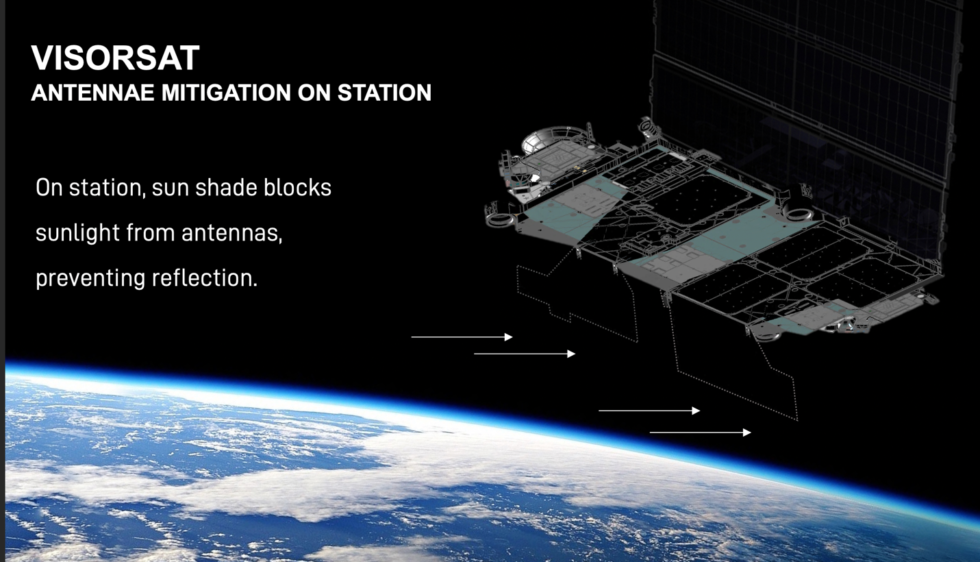Third time’s the charm? SpaceX to attempt Starlink launch again [Updated]
-
After the rain cleared Tuesday, media were permitted an opportunity to visit an LC-39A surrounded by photo-worthy puddles.Trevor Mahlmann
-
Earlier, there was an incoming storm over 39A.Trevor Mahlmann
-
Newly painted meatball on the VAB below moody shelf-cloud filled skies. A very typical 3pm sight at NASA’s Kennedy Space Center.Trevor Mahlmann
-
Raindrops on the sunroof (rainroof?) waiting to setup cameras.Trevor Mahlmann
-
NASA’s Vertic… Vehicle Assembly BuildingTrevor Mahlmann
-
After the storm rolled through, the sky left in its wake was quite photogenic.Trevor Mahlmann
-
Falcon 9 B1051.5 perched atop LC-39A ready for launch of the tenth batch of Starlink satellites and BlackSky rideshare payloads.Trevor Mahlmann
-
One of the angles that Ars photographer Trevor Mahlmann has that (sans vehicles and if the puddle holds) shoud result in a nice reflection view.Trevor Mahlmann
-
Behind the shot.Trevor Mahlmann
8:30am ET Saturday Update: SpaceX first tried to launch its tenth batch of Starlink satellites on June 26 before standing down a couple of hours before liftoff, citing the need to perform additional “pre-flight checks.”
Then, on its second attempt this past Wednesday, the company scrubbed its launch attempt due to poor weather.
Will the rocket company fare better today? Weather conditions are not ideal, with a 40 percent chance of “no-go” conditions due to cumulus clouds and electrical discharge in the atmosphere. What we do know is that the company’s 57 Starlink satellites, all fitted with innovative “visorsats” to reduce their brightness, and two BlackSky Earth observation satellites are ready to go.
Liftoff is set for 10:54am ET (14:54 UTC) today from Launch Complex-39A at Kennedy Space Center. The webcast below should begin about 15 minutes before the launch takes place.
11:50am ET Wednesday Update: Due to unfavorable weather at the launch site, SpaceX scrubbed Wednesday’s launch attempt. The company has not yet confirmed a new launch attempt for the mission.
We have black skies outside the payload fairing and Black Skys inside the fairing.
— Eric Berger (@SciGuySpace) July 8, 2020
Original post: Storms rolled through the Kennedy Space Center on Tuesday afternoon—as they often do during the summer—but SpaceX continued to press forward toward launching its 10th batch of Starlink satellites.
The company will seek to launch 57 Starlink satellites, along with two Earth-observation satellites for BlackSky Global, on a Falcon 9 rocket at 11:59am ET on Wednesday (15:59 UTC) from Launch Complex-39A at Kennedy Space Center. The weather looks decent, with a 60-percent chance of favorable conditions at liftoff.
SpaceX first attempted to launch this mission back on June 26 but stood down a couple of hours before the planned launch, citing the need for additional time to conduct pre-launch checkouts.
The launch of these satellites will bring SpaceX’s Starlink constellation to very nearly 600 total spacecraft in low-Earth orbit. And these are not small CubeSats—each of the Starlink satellites weighs 260kg and has its own on-board propulsion system.
Because SpaceX plans to launch thousands more of these satellites as it builds out a constellation of beacons in low-Earth orbit to provide global Internet service from space, astronomers have understandably begun to raise concerns. They worry both about the night sky for backyard astronomers, as well as sophisticated observatories in Chile, Mauna Kea, and elsewhere.
SpaceX has sought to address the problem, first by darkening the satellites to make them less reflective. Now, the company is taking a bigger step, developing a radio-transparent foam that will flip out from the satellites and prevent reflection.

“This visor lays flat on the chassis during launch and deploys during satellite separation from Falcon 9,” the company stated. “The visor prevents light from reflecting off of the diffuse antennas by blocking the light from reaching the antennas altogether. Not only does this approach avoid the thermal impacts from surface darkening the antennas, but it should also have a larger impact on brightness reduction.”
All of the 57 Starlink satellites on board the Falcon 9 rocket will carry these “visor” sats for the first time.
This will be the third time SpaceX has launched a Falcon 9 first stage five times—this booster started its career with the Demo-1 mission in March 2019 and has since flown three other missions. The company will seek to recover this booster on the Of Course I Still Love You droneship.
Listing image by Trevor Mahlmann
https://arstechnica.com/?p=1690076